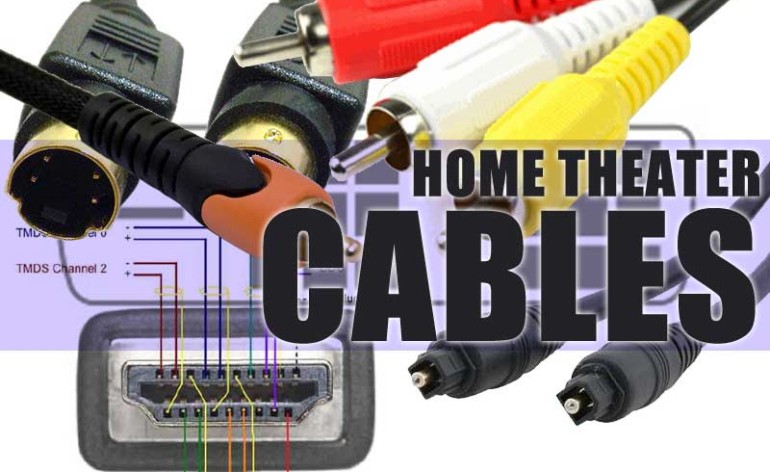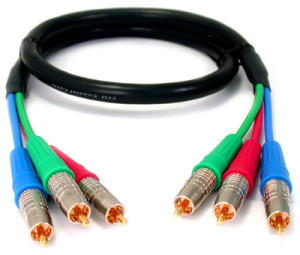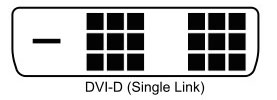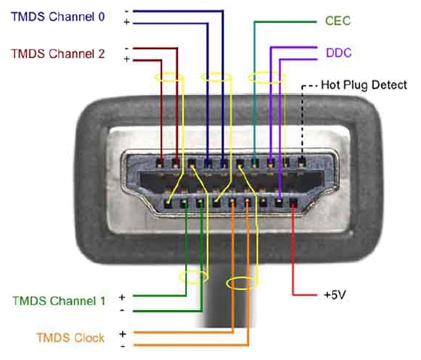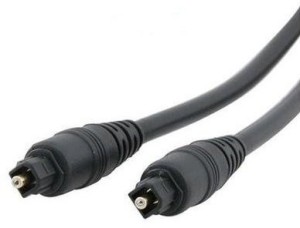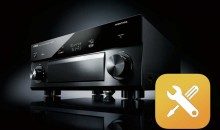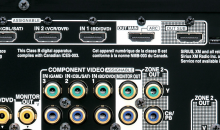Home Theater Cables Explained
While the thought of a brand new surround sound system might be grand, understanding all of the types of audio and video home theater cables and connections can be scary. You’ve got a lot of options, or more if some of your gear is over 5 years old. Much of what’s been produced in the last half decade has simplified the connectivity of your home theater components (there are less cables involved). This guide will clear up the words (the terminology) and also the actual audio and video home theater cables and connections you need to be aware of when wiring up your home theater.
Video Home Theater Cables
Coaxial “F” Style Video Cables
An F-connector (sometimes referred to as a “cableTV” connector or an “RF” connection) is most commonly associated with wiring up an antenna, cableTV or satellite feed to a television, set-top box or DVR device. In the “olden days” it also sent both audio and video over the same connection for VCRs connected to tube (CRT) televisions. Now, it still sends audio and video, but that information is encoded and present in resolutions up to 1080p. While most Coaxial F-style cables are threaded, some older versions can be insert-only. These should be avoided at all costs as they do not make a proper connection for modern televisions and digital set-top boxes.
Composite Video Cables
Composite video cables are RCA-style cables that typically have yellow connectors but may be another color or even neutral in color (black or the same color as the cable). These are the most basic home theater cables from days past. They carry the black and white as well as color information for a video signal in analogue form from a source device (like a VCR or DVD player) to a television. Composite video is hardly ever used anymore but can still be found on older source components, some digital video cameras, and of course legacy products like VCRs. A composite audio cable can also be used as a line level subwoofer cable.
S-Video Cables
These legacy cables aren’t used much anymore, but they feature four pins in order to separate the black and white video signal from the color signal. While higher in quality (better color resolution) than composite video, these connectors are a nightmare as they tend to pop out and have very little retention strength. We tend to avoid using S-video cables unless absolutely necessary.
Component Video Cables
Component video cables were the standard in high quality home theater just ten years ago. While eclipsed by HDMI, component video cables separate the black and white information (on the luminance channel–typically colored green) and use a mathematical method to send all of the color information on the remaining two cables (often colored red and blue). Component video cables can transmit video signals reliably for well over 50 feet without amplification.
[top-seller category_id=’37’ product_count=’4′ title=’Top Component Video Cables’]
VGA (HD15) D-Sub15 Video Cables
These cables are often just called “VGA” cables but in reality they can support high resolution video signals in analogue format. You will commonly see these cables when connecting a computer (desktop or laptop) to a projector, display or television. They are quickly becoming more and more scarce.
DVI, DVI-I or DVI-D Cables
DVI, or digital visual/video interface cables, are either fully digital (19- to 25-pin DVI-D) or hybrid analogue and digital cables designed to transmit video at up to 1920 x 1200 @60Hz resolution (single link) and 2560 x 1600 @60Hz (dual link or DVI-DL). There are actually five kinds of DVI cable pin configurations, but the most common is the single link DVI-D cable (digital only):
There is also the dual link DVI-D cable (digital only, high bandwidth):
The single link DVI-I cable (digital and analogue):
The dual link DVI-I cable (high bandwidth digital and analogue):
And the DVI-A cable (analogue only):
HDMI Cables
HDMI cables have displaced most all audio and video home theater cables in existence. Its all-in-one properties and the fact that it possesses copy protection so sought after by manufacturers makes it an enduring solution for audio and video transmission in home theater. An HDMI cable is characterized by a connector that is trapezoidal(ish) in shape with 19-pins to carry the high resolution video (up to 4K now with the latest version) and up to 32 channels or more of audio (including lossless audio support).
Currently, HDMI can go about 25 feet in passive form (distance is largely resolution and bandwidth-dependent), a metric in which the cable gauge plays a large factor. An active HDMI cable can carry a signal up to 100 feet or more. You can also use fiber optics or baluns (sending the signal over coax or Cat6 cables) to extend that range up to 1000 feet or more. Wireless HDMI has also been made possible from various companies, including DVDO and others, but the range is limited to line of sight.
[top-seller category_id=’33’ product_count=’4′ title=’Top HDMI Cables’]
Audio Home Theater Cables
Stereo RCA Audio Cables
These cables are the most basic audio cables, allowing for stereo audio and no more (save the antiquated Dolby Pro Logic audio that could encode a mono surround track within the stereo audio image.) With many AV receivers, you will still need to connect analogue stereo audio using these cables in order to send audio to a second zone in your home.
[top-seller category_id=’35’ product_count=’4′ title=’Top Audio Cables’]
Coax Digital S/PDIF Cables
Coaxial digital S/PDIF cables send digital audio at up to 192kHz @24-bit resolution. They cannot, however, support the newer lossless formats such as Dolby TrueHD and DTS-HD Master Audio.
Optical TOSlink Digital S/PDIF Cables
Optical Digital cables are identical in capability to their coax (RCA) digital counterparts. They have a maximum capability of 192kHz @24-bit resolution. They also cannot support the newer lossless formats such as Dolby TrueHD and DTS-HD Master Audio.
Hopefully this gives you a nice overview of what to expect in assembling and making those home theater cable selections and connections. Whenever possible, go for an HDMI connection, and only use RCA for secondary zones, or when connecting simple stereo audio or desktop speakers that aren’t expected to carry surround or high resolution digital audio formats. There are other cables in home theater—speaker cables for example—but we’re going to cover those in more detail in another article since there are several types of cable terminations that can be used which render those into a class all of their own.
[top-seller category_id=’36’ product_count=’4′ title=’Top Digital Audio Cables’]

